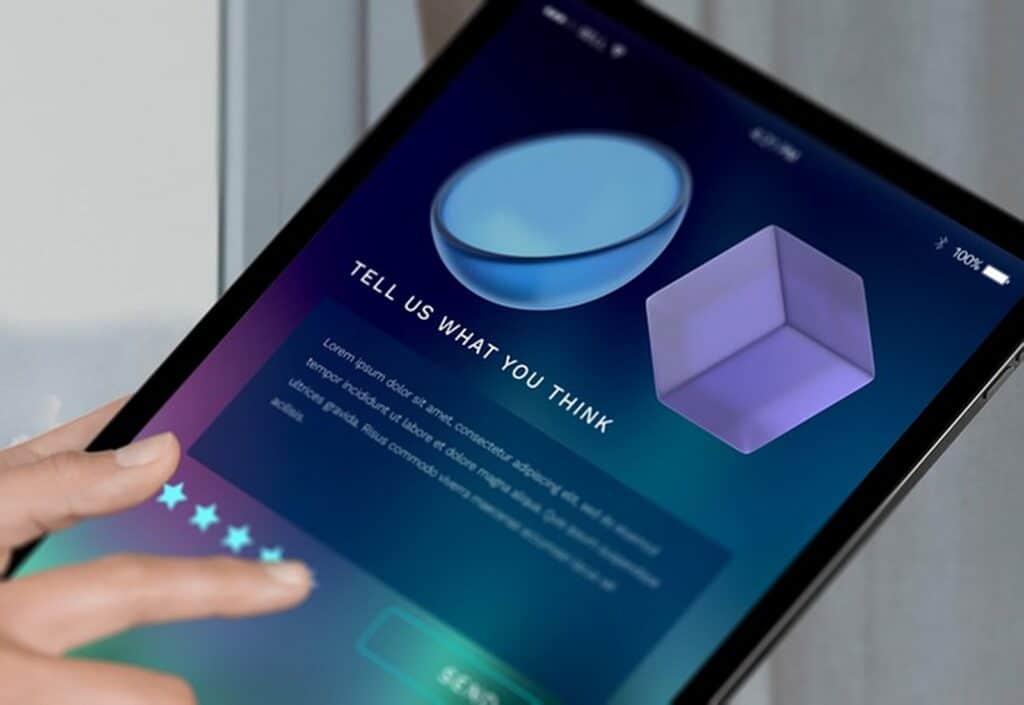Understanding the factors affecting customer satisfaction is vital to providing excellent customer experience. In this article, we’ll examine 10 critical customer satisfaction factors that range from prices to online reviews. We’ll also talk about how and why delivering customer satisfaction should be a core part of your business.
Key Takeaways:
Factors Affecting Customer Satisfaction in Retail

- Customer satisfaction reflects how well your company understands and meets its customers’ needs.
- There’s a positive correlation between high customer satisfaction levels and profitability, business viability, and stock market performance.
- Key drivers for customer satisfaction start with the basics: delivering quality products, finding the balance between price and perceived value, creating a meaningful loyalty program, and providing prompt and responsive customer service.
- Other key factors affecting customer satisfaction include offering personalized interactions, convenience, and the speedy fulfillment of customer orders.
Understanding Customer Satisfaction
Let’s start with the basics: What is customer satisfaction?
“Customer satisfaction” in marketing is generally used as a metric to determine how happy a customer is with the company’s offerings. But let’s not fall into the trap of thinking that customer satisfaction is restricted to how well a product or service answers customers’ expectations.
Customer satisfaction is also influenced by customer’s experiences and interactions with the bras weand. It includes all of the stages and touchpoints we discussed in our articles on the customer journey and customer journey maps.

So, by extension, we can say that customer satisfaction is how well your business – its products/services, processes, and interactions – match your customers’ expectations. Brands that consistently surpass their customers’ expectations tend to have very high customer satisfaction scores.
The next logical question is ‘What impact does customer satisfaction have on your business’ bottom line?”. The short answer is: “A big impact”. Check out what three studies on customer satisfaction concluded:
- “Research has found for every 1% increase in customer satisfaction, a company can expect a 12% increase in profitability.” (Source: B2B International)
- “The cause-and-effect link between customer satisfaction and financial performance is overwhelmingly strong […] Customer satisfaction is shown to be a positive predictor of stock market performance that reliably outperforms the S&P 500.” (Source: Harvard Business Review)
- “Customer satisfaction as a managerial indicator […] is of particular importance, as it is directly or indirectly linked to the viability and the profitability of businesses. According to the survey results, the most important structural elements for a company’s viability, such as market share, are positively related to [the business’] measure [of] customer satisfaction.” (Source: Customers’ Satisfaction and Market Share: An Approach of the Greek Mobile Sector.)
As we discussed in our article on the retail customer journey, there are many opportunities for companies to influence customers’ satisfaction with their brand. Let’s analyze 10 of the most common factors affecting customer satisfaction.
What 10 Factors Influence Customer Satisfaction?
Improving customer satisfaction can’t be left to chance. The average customer path to purchase involves anywhere from 20 to 500 touchpoints – with an average of seven or eight touches before the customer decides to buy. Unsurprisingly, it can be hard to know where to get started. To help you out, we’ve collected the 10 factors affecting customer satisfaction that are particularly important to retailers.
1. Product Quality

We’ll start with Business 101: If you want to keep customers happy, give them a high-quality product. While price, aesthetics, perceived prestige, and numerous other factors go into the customer’s buying decision, nothing will impact their satisfaction as much as the product itself. According to the 2023 study Impact of Product Quality on Customer Satisfaction: Evidence from Selected Consumer Durables, durability comes second only to quality in terms of customer satisfaction. (Aesthetics, features, and reliability were the other main factors.)
So, ground zero for customer satisfaction is providing a product (or products) that:
- Meet the customers’ expectations around what it does and how long it will last (given its price, construction, etc.).
- Match the customer’s goals for the product.
2. Price
Price is another crucial factor in customer satisfaction; if customers feel they have paid too much for a product, their satisfaction decreases. Interestingly, a higher price has been linked to greater customer satisfaction – but only when the product meets or exceeds the customer’s expectations for its performance.

Thus, we see an interesting balance between price, satisfaction, expectations, and value. Customers generally expect lower-priced items to perform poorly compared to their higher-priced competition. In other words, they place a higher value on items with higher prices because there’s also an assumption of higher quality/performance.
On the other hand, price is also a major factor in the decision to purchase. It can deeply influence what, when, and how much customers choose to buy. The takeaway is that customer satisfaction comes from a careful mix of price and perceived value, which is shaped by the customer’s expectations around product performance.
3. Service Quality
Although retailers deal in products, they also deal in services – specifically, the in-store experience and customer service. Both are critical factors for customer satisfaction and ultimately for retail optimization.

We’ve discussed the in-store retail customer experience and its impact on customer engagement elsewhere in this blog, so let’s focus on customer service. According to Salesforce research, 79% of consumers say customer service is as important as the products a business provides. As per the same source, excellent customer service also makes customers a little more lenient if they have a bad experience.
4. Response Time
When a customer makes a complaint, response time is critical. A report by Forrester reveals that 77% of customers think that valuing the customer’s time is the most important part of customer service. And for many customers, that means a prompt reply to an email or help request.

How prompt do we mean? While the average response time is 12-24 hours, approximately 66% of customers expect an acknowledgment within 10 minutes.
5. Convenience
In a study of 1,000 UK shoppers, 76% identified convenience as a key factor in where they decide to shop. This encompasses more than just the physical ease of getting to the physical location; it also refers to the ease of the shopping experience. And that shopping experience can be in-store or online.

In terms of convenience and customer satisfaction, retailers need to look at the user experience of their e-commerce site as well as how customers move through the store. Once again, our article on improving customer’s in-store experience has more details on how to find and remove friction points in physical stores.
6. Communication
Every touchpoint you have with the customer is a form of communication. The importance of clear communication for customer loyalty can’t be overemphasized; inconsistent, unclear communication is a shortcut to customer churn.

Good communication takes many forms, from in-store signage to emails and online ads. Whatever the medium, it’s important to ensure the messaging stays cohesive. This is the entire point of omnichannel, which ensures a uniform brand experience across touchpoints.
It’s also vital to understand the customer’s perspective in all this. Unless you meet them where they are, even the clearest communication will be ineffective.
7. Delivery
Delivery is often referred to as retail’s “last-mile problem”. As such, it’s one of the critical factors affecting customer satisfaction.
A customer’s mood may be buoyant after they complete their online purchase – especially if the checkout process was smooth and user friendly. But as the delay between ordering and delivery lengthens, the customer’s anticipation turns to unease and then frustration: Where is their order? What’s taking so long? Is there a problem?
In short, shipping and delivery issues can completely negate a positive customer experience.
Thus, it’s not surprising that 63% of customers indicate poor delivery service would make them stop doing business with a retailer.

What can retailers do to improve customer satisfaction in the delivery process? It starts with clear communication and setting expectations. Letting customers know how long their order will take to reach them – and providing regular updates throughout the process – can reduce frustration and impatience. Offering clear, prompt support and providing multiple contact options can also keep customers from feeling abandoned after they complete their purchase.
8. Personalized Experience
We don’t need to go into detail on this one. If you’ve been keeping up with digital transformation, you already know the value of personalizing the customer experience.
Personalized experiences are no longer a competitive advantage; they’re what customers expect. According to Adobe, 67% of customers welcome personalized messaging and interactions. As an example, personalized emails had 139% higher click rates than their non-personalized counterparts.
9. Loyalty Programs for New and Existing Customers
Customer loyalty programs can have a direct and indirect impact on customer satisfaction.
In the study Effect of Customer Loyalty Program on Customer Satisfaction and Its Impact on Customer Loyalty, researchers discovered a positive link between customer loyalty cards and customer satisfaction. They credited this to the loyalty program’s ability to provide benefits and special offers to the customer.

Obviously, a customer loyalty program with meaningful, reachable, and well-chosen rewards will encourage customers to keep returning to the business; you’re literally rewarding them for doing so, which creates a fun and valuable experience. But what about the indirect way that customer loyalty programs affect customer satisfaction?
Customer loyalty programs are gold mines of consumer data. They can tell you volumes about your customers’ preferences, needs, situations, habits, etc. Analyzing this information can help you better understand your customers, which leads to improved connections and higher customer engagement. And this is a direct path to greater customer satisfaction.
10. Online Reviews
The last of our factors affecting customer satisfaction in retail is all about how you handle online reviews. This may seem like a bit of an irrelevance since reviews are posted after the customer’s transaction is complete. But online reviews can be an excellent way to demonstrate to prospective customers how well you listen to your audience.

A BrightLocal survey shows that 88% of people are likely or very likely to do business with a company that always responds to online reviews – whether positive or negative. Why? Because it shows that you care enough about your customers to acknowledge their feedback and address their concerns. And the same survey indicates that 98% of consumers read online business reviews, so you can be sure your customers are paying attention.
There’s another benefit to online reviews: like customer loyalty programs, they can provide you with a direct look into your customer’s lives – in this case, into their opinions and values. You can also analyze reviews to see how well various business areas are performing. This is another domain with a lot of data-backed insights to offer retailers.
Addressing Customer Satisfaction Factors in Your Business
In our experience, most retailers have room for improvement in several of these customer satisfaction areas. What should you do to address any weaknesses in your customer experience?
In any CX endeavor, we always encourage our clients to start where they are. It’s essential to understand what capabilities you already have. Next, we emphasize thinking practically: what can you reasonably expect to achieve in the next 3 months, 6 months, or year?
Another important aspect of improving retail customers’ satisfaction is listening to them – setting aside our own expectations and biases and really listening to what they say. This is such a major part of the customer research process that we’ve written several articles about it:
- Active Listening & Customer Research: A Practical Introduction
- Active Listening & Customer Research: What Not to Do
- The Most Overlooked Steps of Empathy
The key takeaway for this section is that every retailer needs to improve some part of their customer experience. While it’s easy to feel overwhelmed by the scale and complexity of all the factors affecting customer satisfaction, remember: change can start small and build into something very impactful.
The Power of Customer Satisfaction Factors in Retail
In retail, customer satisfaction results from hard work, careful listening, analyzing and interpreting data, and lots of adjustments. The goal is first to understand the customer and then to meet their needs. Doing this requires more than just understanding the 10 factors affecting customer satisfaction in retail that we just discussed. You need an attitude of empathy, curiosity, and flexibility. Only then can you provide a truly satisfying customer experience.
How you fulfill that overarching goal will depend on your business and your customers. The factors affecting customer satisfaction in retail are nearly universal, but the possibilities they present are also nearly endless.
If you’d like some clarity into where your business needs to polish up its customer experience, consider CX by Design’s customer experience consulting service. We’ll take the time to really understand you and your customers, then we’ll help you find and close gaps in your operations and experience. Contact us today for a free 30-minute consultation.